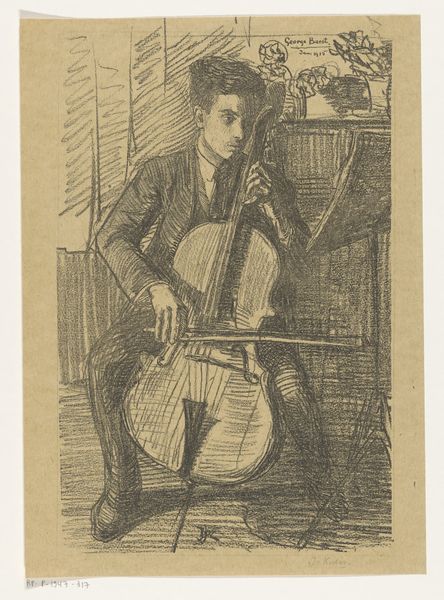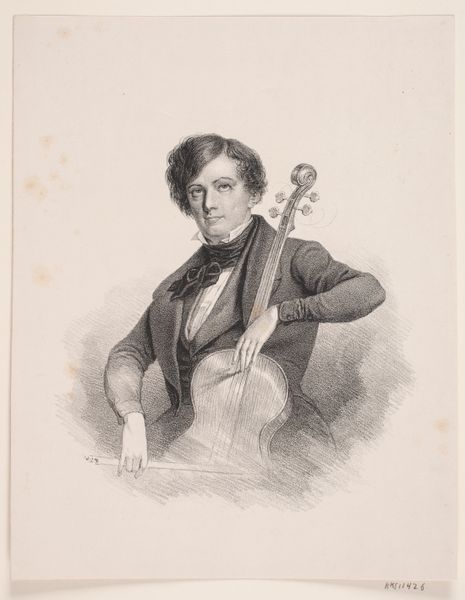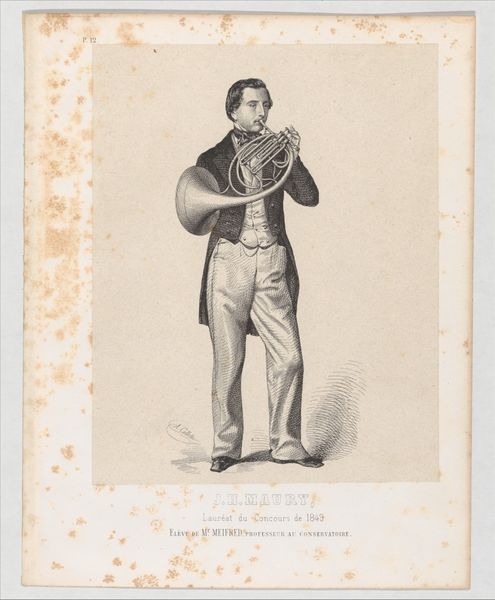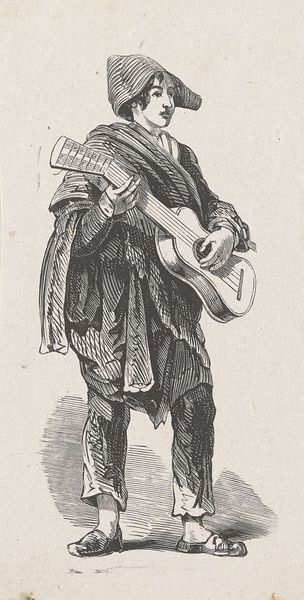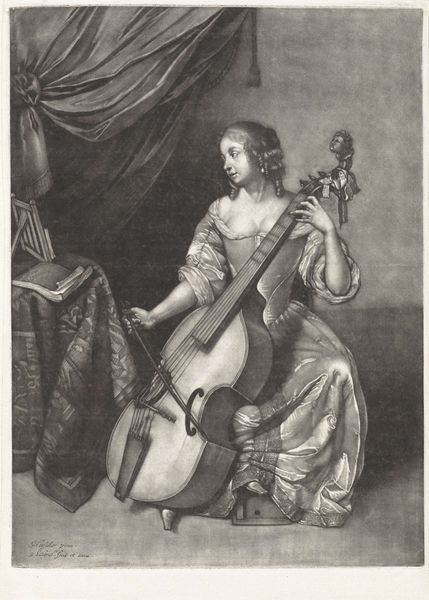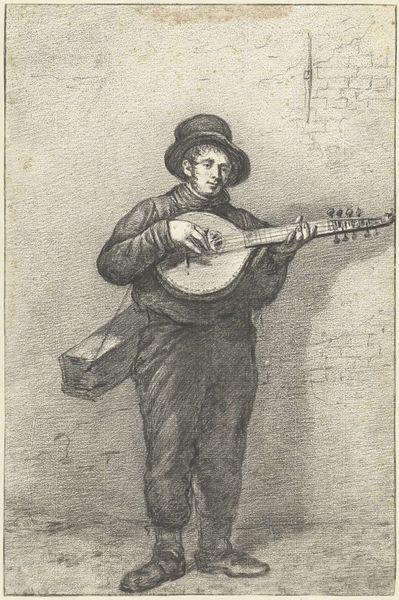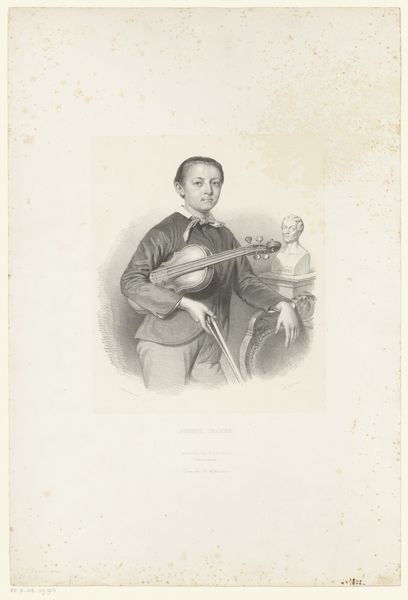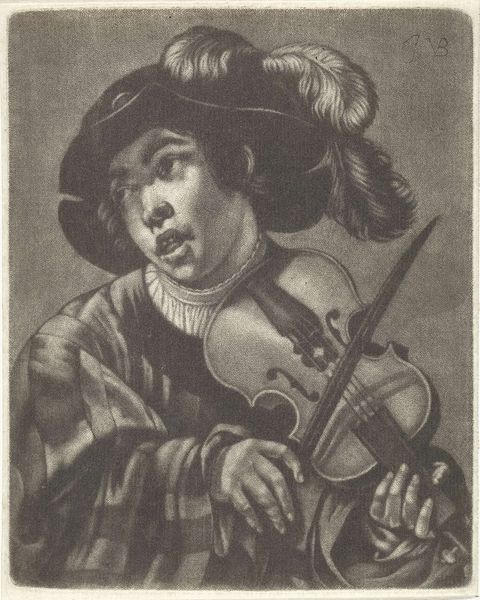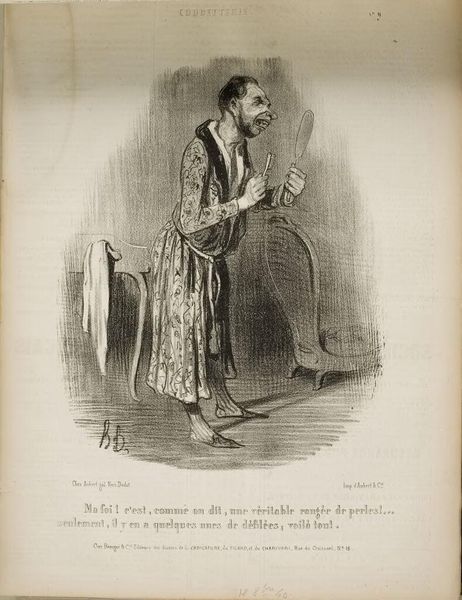
lithograph, print, paper, engraving
#
lithograph
# print
#
figuration
#
paper
#
france
#
men
#
line
#
portrait drawing
#
genre-painting
#
musical-instrument
#
graphite
#
engraving
Dimensions: Lithographs: H. 6-1/2 in., W. 5-1/4 in. Total measurement with matte: H. 11-1/4 in., W. 10 in.
Copyright: Public Domain
Editor: Here we have Alexandre Désiré Collette's "Lithographic Plate," created around 1850. It’s a print of a man playing a cello. What immediately strikes me is the contrast between the detail in the figure and the relative plainness of the background. What do you see in this piece? Curator: What captivates me is the artist's mastery of line. Notice how the varying density and direction of the lines define form, creating volume and texture in both the figure and the cello. Consider how the hatching creates shadows and highlights, directing our gaze across the composition. The subject is seemingly less relevant than how the formal elements operate. Editor: So, you're more interested in how the image is constructed, rather than who this musician might be or the kind of music he plays? Curator: Precisely. Think about the lines creating a dynamic interplay. How do these lines articulate the figure's pose? Is there tension, movement, or a static quality in the posture, revealed only through formal inspection? Editor: I see what you mean. The way the lines curve around his arm holding the bow creates a sense of movement, even though he’s sitting still. Curator: Indeed. It's a study in the push and pull of visual forces, using minimal means to maximal effect. Consider the varying textures created merely with line work: the sleekness of the cello versus the soft folds of his jacket, or the stubble around his face. Editor: I never thought about prints this way. Focusing on the formal elements really opens up a new way of seeing, detached from any specific narrative. Curator: Hopefully, you will think differently about how you look at prints and other works of art in the future.
Comments
No comments
Be the first to comment and join the conversation on the ultimate creative platform.


